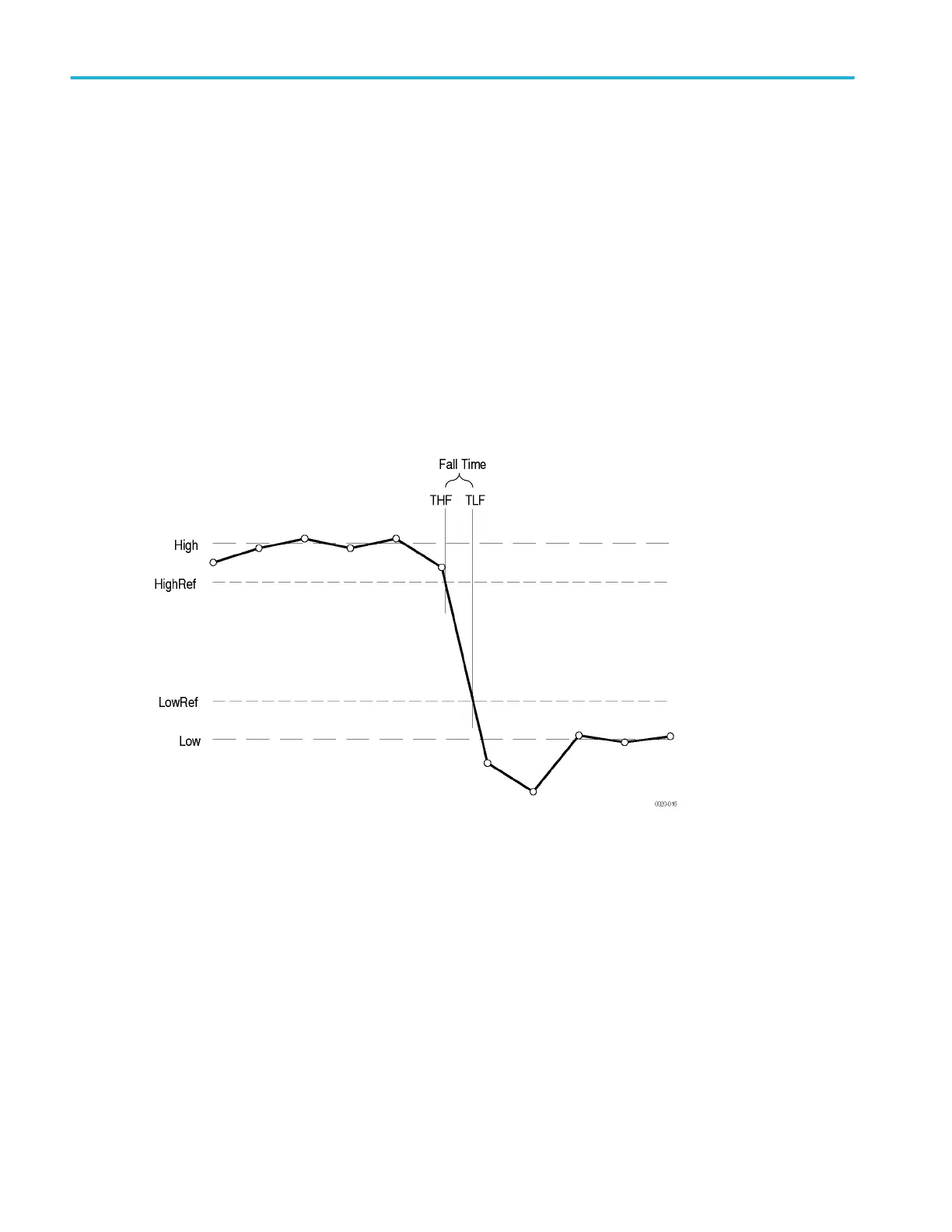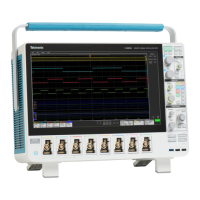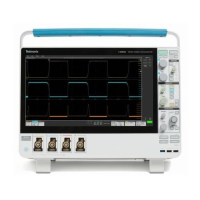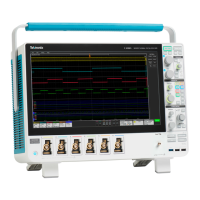Extinction dB. Optical measurement. Extinction dB is typically 8 to 12 db. To exceed this range the input may be from nonoptical
probes or noncommunication lasers.
Extinction dB = 10.0 (log
10
(Extinction Ratio))
Fall time. fall time
Timing measurement. The time taken for the falling edge of a pulse to drop from a HighRef value (default = 90%) to a LowRef
value (default = 10%).
The following figure shows a falling edge with the two crossings necessary to calculate a Fall measurement.
1. Searching from Start to End, find the first sample in the measurement zone greater than HighRef.
2. From this sample, continue the search to find the first (negative) crossing of HighRef. The time of this crossing is THF. (Use
linear interpolation if necessary.)
Figure 22: Fall Time
3. From THF, continue the search, looking for a crossing of LowRef. Update THF if subsequent HighRef crossings are found.
When a LowRef crossing is found, it becomes TLF. (Use linear interpolation if necessary.)
4. FallTime = TLF – THF
Frequency. Timing measurement. The reciprocal of the period. Measured in Hertz (Hz) where 1 Hz = 1 cycle per second.
If Period = 0 or is otherwise bad, return an error.
Frequency = 1 / Period
High. 100% (highest) voltage reference value. See High Low.
Using the min-max measurement technique:
High = Max
Oscilloscope reference
692 DPO70000SX, MSO/DPO70000DX, MSO/DPO70000C, DPO7000C, and MSO/DPO5000B Series

